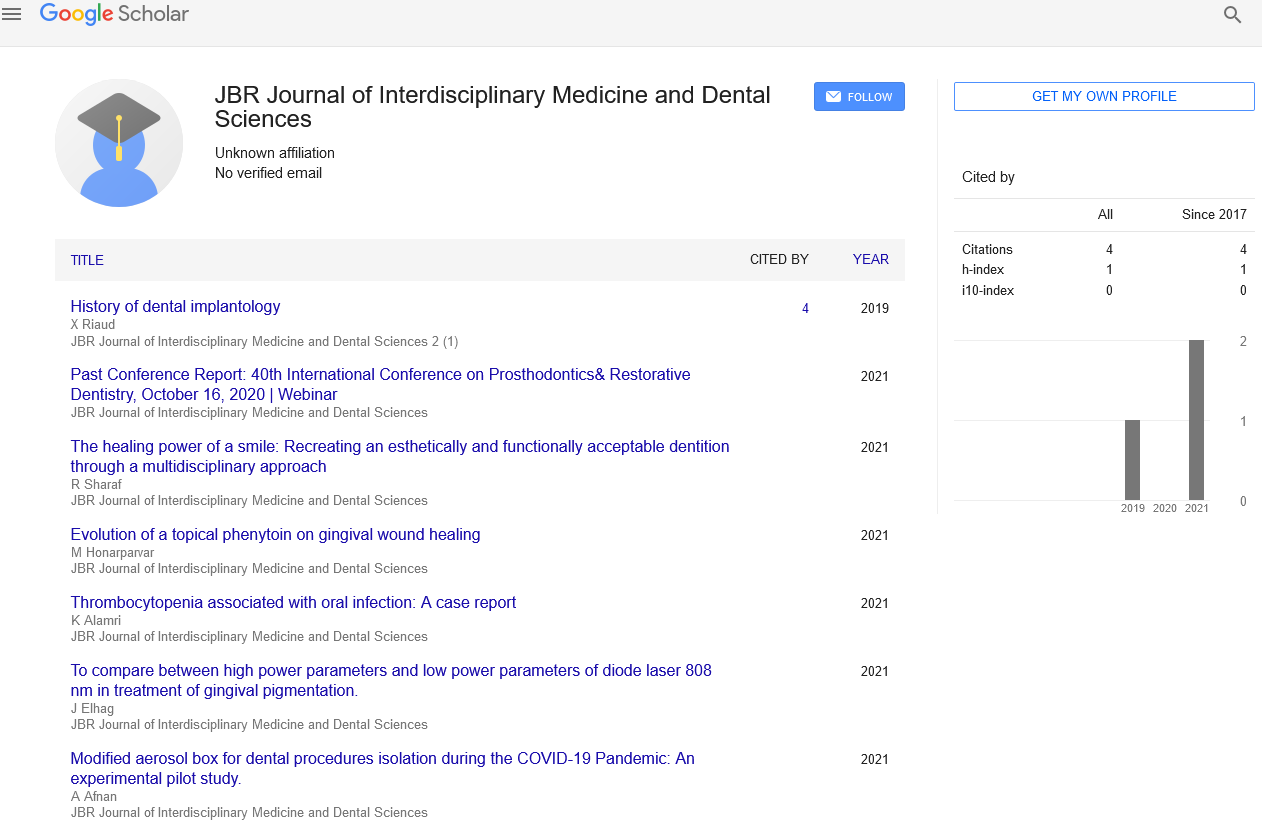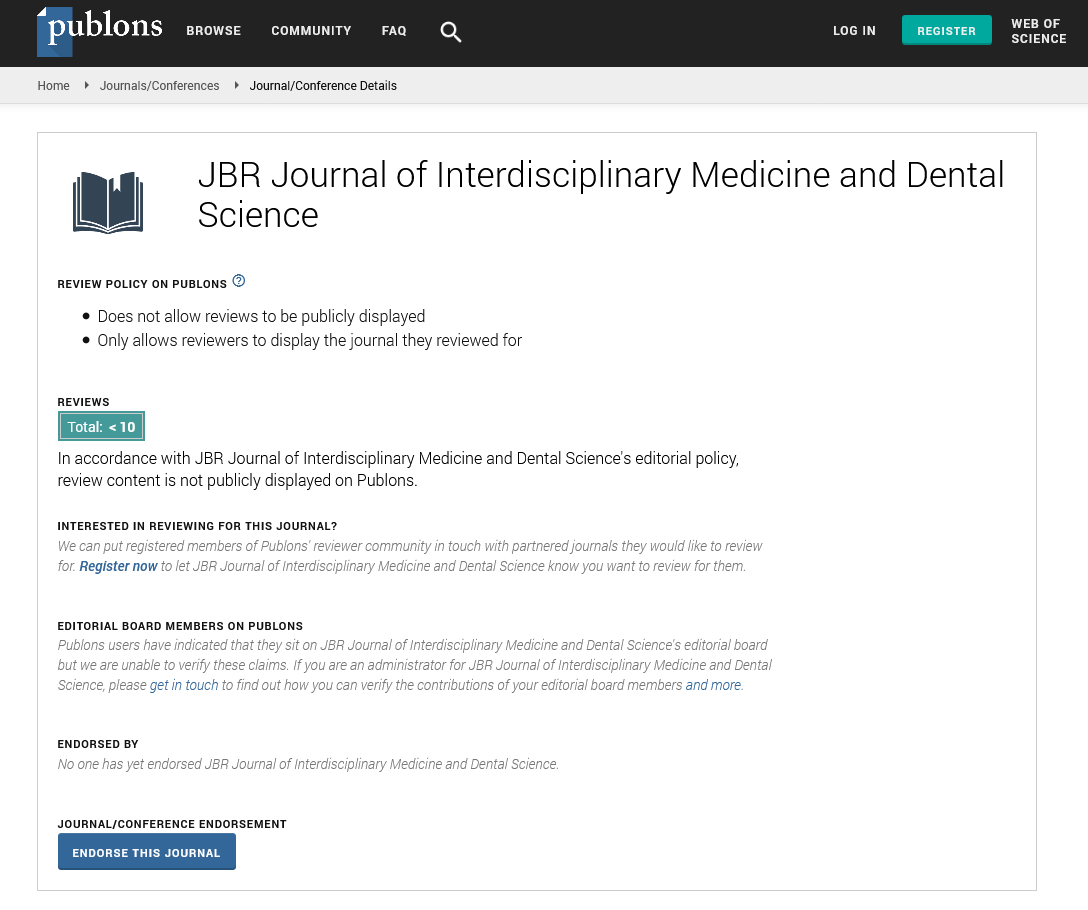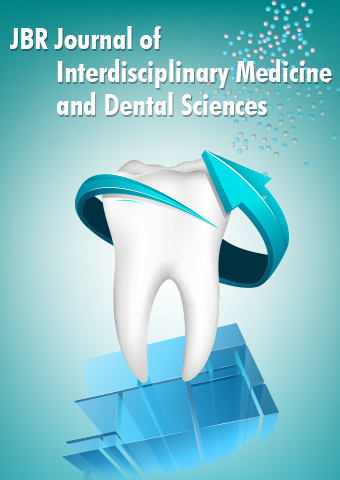Commentary - JBR Journal of Interdisciplinary Medicine and Dental Sciences (2022) Volume 5, Issue 4
A Note on the Nanoporous Platforms.
Tejal A. Desai*
Department of Bioengineering, University of Illinois at Chicago, Department of Biomedical Engineering, Boston University, 44 Cummington Street, Boston, MA 02215, USA.
Department of Bioengineering, University of Illinois at Chicago, Department of Biomedical Engineering, Boston University, 44 Cummington Street, Boston, MA 02215, USA.
E-mail: tdesai@bu.edu
Received: 01-Jul-2022, Manuscript No. jimds-22-31005; Editor assigned: 04-Jul-2022, PreQC No. jimds-22-31005; Reviewed: 15- Jul-2022, QC No. jimds-22-31005; Revised: 22-Jul-2022, Manuscript No. jimds-22-31005 (R); Published: 29-Jul-2022, DOI: 10.37532/2376- 032X.2022.5(4).60-61
Abstract
Micro fabricated nano porous membranes can be used both in vitro for cell-based assays and in vivo for immune isolation and drug delivery applications. Rapid advancements have been made in the biomedical applications of micro and nanotechnology. While the focus of such technology has primarily been on in vitro analytical and diagnostic tools, more recently, in vivo therapeutic and sensing applications have gained attention. This paper describes the creation of monodisperse nonporous, biocompatible, silicon membranes as a platform for the delivery of cells. Studies described herein focus on the interaction of silicon based substrates with cells of interest in terms of viability, proliferation, and functionality.
Keywords
Nanotechnology • Drug delivery • Silicon • Immunoisolation • Cell-based assays
Introduction
Micro- and nanofabrication techniques are currently being used to develop implants that can record from, sense, stimulate, and deliver to biological systems [1]. Micro machined neural prostheses, drug delivery micro pumps/needles, and micro fabricated immune isolation bio capsules have all been fabricated using precision-based micro technologies. Micro fabrication methods have also been applied to biotechnology in areas such as DNA sequencing by hybridization, protein patterning, and functional cell sorting. The application of micro- and nanotechnology to the biomedical arena has tremendous potential in terms of developing new diagnostic and therapeutic modalities and has increasingly been used to solve complex problems at the molecular and cellular level [2]. While the majority of research has focused on the development of miniaturized diagnostic tools such as electrophoretic, chromatographic, and cell micromanipulation systems. Micro fabricated substrates can provide unique advantages over traditional biomaterials used for bio sensing and delivery due to the: 1) ability to control surface microarchitecture, topography, and feature size in the nanometer and micron size scale, and 2) control of surface chemistry in a precise manner through biochemical coupling or photo patterning processes.
Description
The pore size was controlled through a sacrificial oxide etching which allows one to create nanoscale features using conventional lithography [3]. The membranes can be fabricated in arrays on a single wafer, allowing one to produce multiple nanoporous membranes for in vitro or in vivo applications. We found that the insulinoma cells grew without any marked changes on the silicon surfaces. In fact, viability of the cells in the silicon nanoporous environments was equivalent to conventional cell culture surfaces, ranging from 100 to 90 percent over an eight day period .All cell types had normal morphology. In terms of proliferation, cells seeded in nanoporous microenvironments had similar levels of proliferation compared to control surfaces up to day 4 and then a decreased rate of proliferation at day 8. This behavior was presumably due to contact inhibition resulting from the limited nanoporous surface area that cells were seeded in as compared to the control surface area. Cells exhibited limited viability and proliferation on the negative control surface of latex. It is interesting to note that the cells limit their attachment to the porous regions of the membrane. Such behaviour could be due to the nanopores providing a greater surface area for cells to attach. In addition, the etched porous surface is more hydrophilic as its final etch step is in HF solution and therefore July promote greater cell attachment. Glucose-supplemented medium was allowed to diffuse to the cells, through the membrane, to stimulate insulin production and monitor cell functionality. Results indicate that the insulin secretion by cells and subsequent diffusion of the insulin through the nanoporous membrane channels is similar to that of cell grown in culture [4]. Cells seeded to the silicon nanoporous membranes experienced an approximate 245.31% ± 62.5% growth increase from day 1 to day 4 while those seeded to the polyurethane (control) capsules encountered only a 75.9% ± 21% growth increase. Moreover, cells attached to the silicon nanoporous membranes underwent high proliferation, increasing in number by approximately two fold every other day of the culture period. At day 1 of cell culture, the number of cells attached to the silicon based bio capsules and control capsules were observed approximately equal. These platforms can be interfaced with living cells to allow for biomolecular separation and immune isolation. Ideally a membrane in contact with cells should be biocompatible and allow for the free exchange of nutrients, waste products, and secreted therapeutic proteins [5]. Furthermore, where nutrients and time sensitive compounds are diffusing across a membrane it is highly desirable to be able to control the diffusion characteristic precisely in order to retain the dynamic response of seeded cells to external stimuli.
Acknowledgement
None
Conflict of Interest
No conflict of interest
References
- Gourley PL, Biocavity laser for high-speed cell and tumour biology. 2, 942-944(1996).
- Anderson DJ, Najafi K, Tanghe S J et al. Transactions on Biomedical Engineering. 36, 693-704(1989).
- Leoni L, Desai TA. Nanoporous Biocapsules for the Encapsulation of Insulinoma Cells .IEEE Transactions in Biomedical Engineering, vol. 48, November (2001).
- Desai TA, Hansford DJ, Leoni L et al. Nanoporous Anti-fouling Silicon Membranes for Implantable Biosensor Applications. Biosensors and Bioelectronics.15, 453-462(2000).
- Akin T, Najafi K. IEEE Transactions on Biomedical Engineering .305-313(1994).
Indexed at, Google Scholar, Crossref
Indexed at, Google Scholar, Crossref
Indexed at, Google Scholar, Crossref


